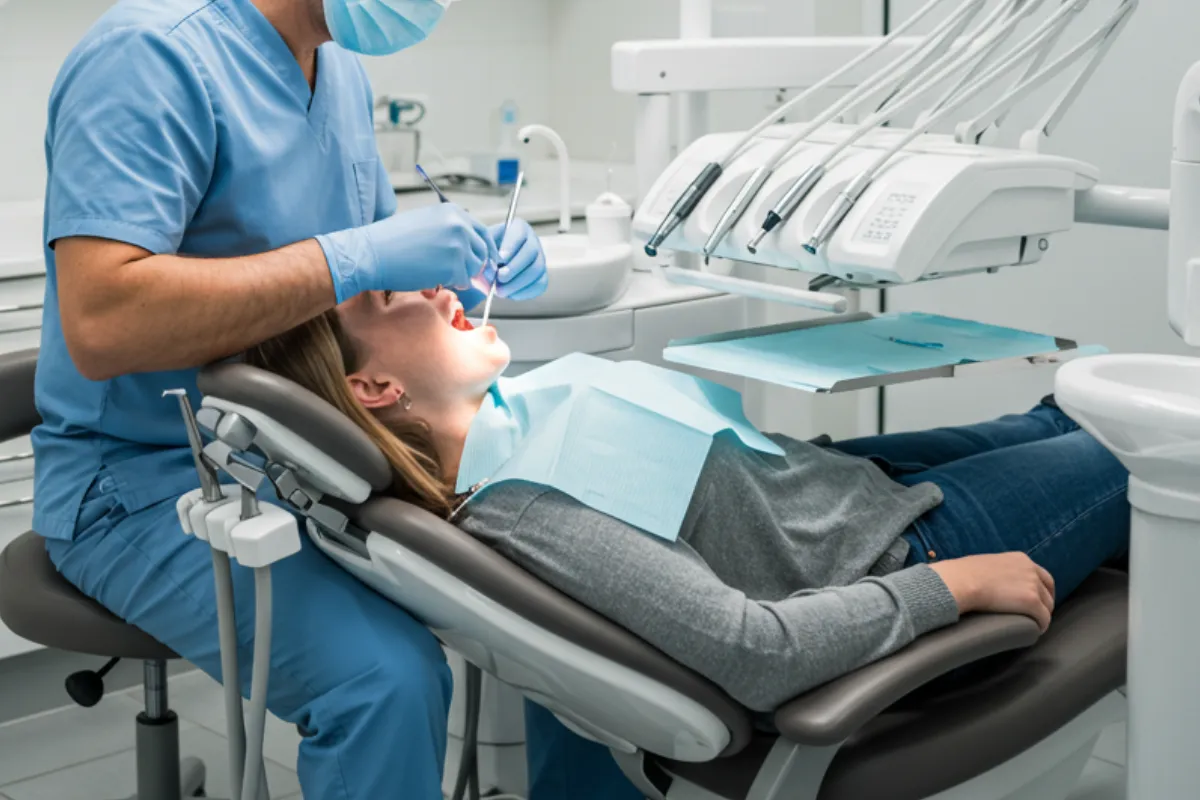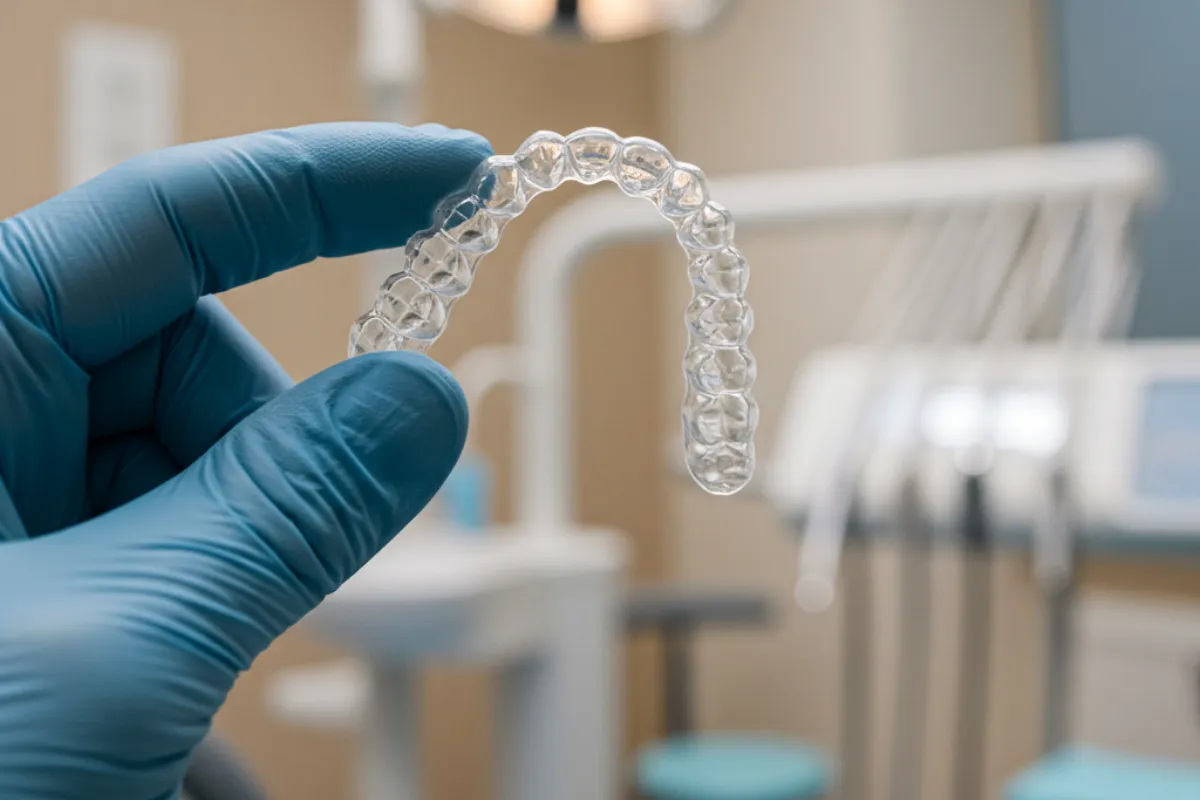Understanding Dental Operculum and Food Trapping Issues

What Is a Dental Operculum and Why Does It Form?
A dental operculum is a term that may sound unfamiliar, but it describes a surprisingly common dental issue—especially for anyone dealing with wisdom teeth. An operculum refers to a flap of gum tissue that partially covers a tooth which hasn’t fully erupted through the gum line. This situation most often occurs with wisdom teeth, particularly those in the lower jaw.
As wisdom teeth try to emerge, they sometimes lack enough space to break through completely. This partial eruption leaves a portion of the tooth covered, while the rest is exposed in the mouth. The remaining gum tissue overhanging the tooth forms the operculum, creating a small pocket or space between the gum and the tooth surface.
This pocket is more than a minor inconvenience. It becomes a prime area for food particles and bacteria to accumulate, which can be challenging to clean thoroughly with regular brushing or flossing. The result is not just discomfort, but an increased risk for infections and other dental complications. The unique location and irregular shape of the operculum make it especially problematic, as toothbrush bristles and floss may not reach the trapped debris effectively. Understanding what a dental operculum is—and why it forms—is the first step in recognizing and managing the related issues that may follow.
Common Causes Behind Food Trapping and Gum Discomfort
One of the most frustrating aspects of having a dental operculum is the persistent trapping of food around the affected tooth. The root cause lies in the partial eruption of the tooth—often a wisdom tooth—that leaves a soft tissue flap (the operculum) covering part of the crown. Unlike fully erupted teeth, where the gum seals tightly around the base, the operculum creates a sheltered nook that easily captures food debris and harbors bacteria.
Poor oral hygiene can worsen the situation. If brushing and flossing don’t reach beneath the flap, bacteria thrive in the warm, moist environment. Over time, this buildup leads to more than just minor discomfort. Food particles that remain stuck under the operculum feed bacteria, which multiply rapidly. As these microorganisms accumulate, they can irritate and inflame the gum tissue.
The longer debris and bacteria are allowed to persist, the greater the risk of developing pericoronitis—a painful infection of the gum tissue surrounding a partially erupted tooth. This condition is characterized by swelling, redness, and sometimes even difficulty in opening the mouth or chewing. In short, the combination of a partially erupted tooth, the protective gum flap, and less-than-ideal cleaning creates a perfect storm for both food trapping and gum discomfort.
Recognizing the Signs: Symptoms of Operculum Problems
It’s not always easy to tell when an operculum is causing trouble, but there are some clear warning signs that shouldn’t be ignored. Swelling and redness of the gum tissue around a partially erupted tooth are often the first indicators. This area might feel tender or sore to the touch, and discomfort may increase when chewing, biting, or even speaking.
Pain is another common signal, especially as food debris and bacteria continue to aggravate the gum. In more advanced cases, the discomfort can make it difficult to open the mouth fully—a condition known as trismus. Persistent pain is a key sign that the issue is more than just a passing irritation.
Infection brings additional symptoms. If the trapped bacteria multiply unchecked, pus may begin to discharge from beneath the gum flap, sometimes accompanied by an unpleasant taste. Bad breath, or halitosis, is also frequently reported, as the decaying food and bacteria release foul-smelling compounds.
Recognizing these symptoms early can make all the difference. Prompt attention can prevent the issue from escalating into a more serious infection or requiring more invasive treatment. If you experience any combination of swelling, pain, pus, or persistent bad breath near a partially erupted tooth, it’s a clear sign that a dental operculum may be at the root of the problem.
Effective Solutions: Treatment and Prevention Strategies
Managing problems caused by a dental operculum starts with diligent oral care. Gentle but thorough brushing and flossing around the affected area are crucial to dislodge food debris and disrupt bacterial colonies. Using an antibacterial mouthwash can help reduce the number of harmful microorganisms in the mouth, offering additional protection against infection.
In addition to daily hygiene, rinsing the mouth with warm saltwater can be particularly soothing. This simple home remedy helps cleanse the area, reduce inflammation, and promote healing. Swishing a saline solution for 30 seconds several times a day can make a noticeable difference in comfort and cleanliness.
However, some situations require professional attention. Dental cleanings performed by a dentist or hygienist can remove stubborn debris and plaque from areas inaccessible to home care. If an infection is present, a dentist may prescribe antibiotics to control the bacteria and prevent further complications.
If problems persist despite these measures, minor oral surgery may be recommended. An operculectomy—a straightforward procedure to remove the excess gum tissue—can eliminate the pocket trapping food and bacteria. In cases where the wisdom tooth is severely impacted or causes recurrent infections, extraction of the tooth might be the best long-term solution. Whether through preventive care or targeted treatment, addressing the operculum early helps maintain healthy gums and overall dental well-being.
When to Seek Professional Dental Care for Lasting Relief
While home care can alleviate mild discomfort from a dental operculum, certain symptoms warrant swift professional attention. Persistent pain, swelling that does not subside, or any discharge of pus are red flags that an infection may be developing. Ignoring these warning signs can lead to more serious complications, such as abscess formation or the spread of infection to other areas of the mouth and jaw.
Early intervention by a dental professional offers the best chance for relief and quick recovery. Dentists have the expertise to diagnose operculum-related issues accurately, assess the severity of any infection, and recommend the most appropriate treatment—whether it’s a deep cleaning, medication, minor surgery, or in some cases, extraction of the problematic tooth.
Regular dental check-ups are also crucial for prevention. Routine visits allow your dentist to monitor the health of partially erupted teeth, spot developing operculum problems before they escalate, and help you maintain optimal oral hygiene. This proactive approach not only addresses current discomfort but also supports your long-term dental health.
If you or a family member in North Vancouver—or anywhere—are experiencing ongoing gum pain near a wisdom tooth, don’t wait for the problem to worsen. Reaching out to your dental care provider ensures you receive personalized care, guidance, and peace of mind, helping you keep your smile healthy and comfortable.






